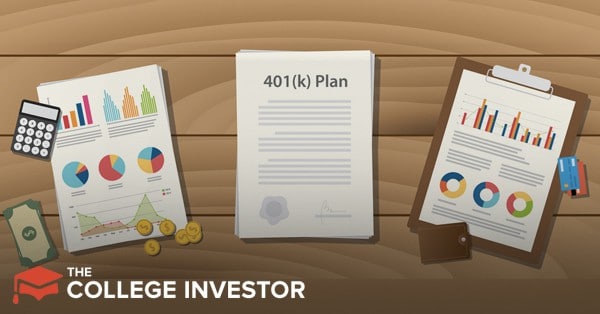Business
Risks Of Target Date Funds And How To Use Them Effectively


Target date funds have become the go-to investment choice for many Americans. In fact, they are now offered in over 80% of 401(k) plans nationwide.
As a result, hundreds of billions has been invested in these funds. Why do Americans like them? Because they have the premise of being simple investments that happen to be perfectly ready at the “target date”. However, this is not always the case.
If you don’t know what you’re doing, you might not be effectively using your target date fund – and that can pose bigger problems for retirement.
Let’s talk about some of the problems with target date funds, and how to use them effectively to invest.
What Is A Target Date Fund?
A target date fund is simply a mutual fund that is designed to be the “appropriate” allocation of risk/reward based on the retirement date listed on the fund. For example, a Target Date 2040 Fund is supposedly designed to be the appropriate allocation of stocks and bonds for someone who is going to retire in 2040, which over 15 years away. This fund would most likely invest more heavily in bonds, and less in stocks, than say, a Target Date 2050, where the retirement age is almost 25 years away.
It is important to look at how these funds are made up: stocks, bonds, cash, or even real estate and commodities, can make up a fund. In fact, some of these funds are even funds of funds, meaning that for the stock percentage, they may invest in a stock mutual fund, and for the bond percentage, own a bond fund.
It is also important to note that these funds don’t offer any guarantees. Yes, they put a date on the fund. But that date really means nothing. It’s not the date when your money is ready. It is simply the date that the fund chose to base its risk/reward model off of. Thus, you are still exposed to risk in these funds.
The Biggest Risks Of Target Date Funds
The Fees: The fees of Target Date Funds are not usually the best. In fact, the average Target Date Fund has an expense ratio of 0.69%. While it’s not bad, it’s not great. However, these fees can really add up over long time frames, such as purchasing a Target Date 2050 fund. The fees can be even higher for Target Date Funds that are “funds of funds”, since they also have hidden fees in the investments they own. Concerned about fees? Look for Target Date Funds with low expense ratios, around 0.20%. Or, simply create a balanced allocation yourself with a stock and bond fund, which can be had for very low fees.
False Sense of Safety: Given that these funds are called “Target Date Funds” and they are available in 401(k)s nationwide, it is widely assumed that these funds are safe ways to invest for retirement. It is important to remember that the date listed is only the guide the investment company uses in a calculation. It does not guarantee anything, and may not even line up with individual risk and reward structures. It also doesn’t take into consideration your entire portfolio, which could include other stock or bond holdings. Basically, do your own research on what your asset allocation should be.
The Hidden Contents: It is almost impossible to tell what is inside these funds, and how the funds will perform in certain circumstances. Yes, they give a date. But each investment company has a different model for what a portfolio should look like based on that date. If you invest in the fund, you should know the allocation of stocks, bonds, and cash right up front. You should also know what the fund is going to do in adverse market conditions: ride it out or shelter in bonds. It is important to remember that bonds are trading at all time highs right now, so even your Target Date Funds could suffer major losses ahead.
They Only Work While Working: Target Date Funds are also only designed to be used when accumulating wealth for retirement. Once you reach the date, the portfolio doesn’t change into one where you can withdraw from it easily. In fact, you will most likely end up having to sell the entire fund and start again. Most Target Date Funds simply stop changing the allocation at the Target Date. So, if the model calls for 90% invested in bonds at the date, it will stay that way infinitely.
How To Use Target Date Funds Effectively
The key to using target date funds effectively (and most people don’t do this), is that you should invest 100% of your portfolio in the fund. Yes, 100%.
Not 50%, not 70%, but 100%.
The reason is this: the target date fund is already diversified based on the date you selected. So, as long as you are selecting the appropriate date for your retirement, then the fund automatically rebalances the appropriate mix of stocks and bonds for you.
If you only invest 50% of your portfolio in the fund, and then invest 50% in other funds – you mess up your total portfolio allocation. This could leave you overexposed or underexposed in certain sectors – lowering your total return.
Over the long run, this could even mean you miss your goals for retirement.
So, to use your target date fund effectively, you need to be 100% invested in it.
Related: Delayed-Onset Investment Glide Paths In Retirement Plans
Can You Invest In Target Date Funds Outside Of A 401k?
Yes! You can definitely invest in target date funds outside of your employer’s 401k. And going back to the rule above, if you’re thinking about investing in target date funds, this is exactly what you should do.
Every major brokerage (Vanguard, Fidelity, etc.) has a list of target date funds that they offer to their clients. Check out our list of the best places to invest here.
To make this work, you should select the same date you would inside your employer 401k. For example, if you’re going for 2050, you should find the 2050 fund in your brokerage. For example, Vanguard has the Vanguard Target Retirement 2050 Fund (VFIFX). This fund would be comparable to all 2050 retirement funds potentially offered in your 401k.
Final Thoughts
All of these risks should be carefully considered when investing in Target Date Funds. They may be good options for people looking for “simple”. However, even simple can be complicated and expensive. Just like any investment product, know it inside and out.
And you also need to remember how to use it effectively inside your portfolio as a whole.
Editor: John Frainee
The post Risks Of Target Date Funds And How To Use Them Effectively appeared first on The College Investor.


